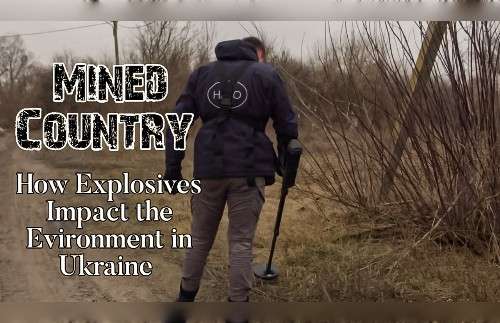
As rescuers in Brazil search for survivors of a dam collapse, questions abound about the health and environmental risks of the thick, brown, metal-laden mine waste that flowed over buildings. The accident comes after the United Nations and others warned that dam failures in the mining industry are becoming increasingly catastrophic because the structures are growing larger and more numerous around the globe.
A look at some of the hazards:
What Are Mine Tailings and How Are They Stored?
Mine tailings are large volumes of waste rock and other material left behind after companies dig up mineral-bearing ore and run it through mechanical and chemical processes to remove the most valuable components. The tailings are disposed of in ponds or other “impoundments,” often in a mud-like mixture of water and rock known as slurry.
A single large mine can produce hundreds of thousands of tons of tailings each day that are typically pumped into a massive holding area behind a dam, where the waste can remain for decades. Tailings piles can be dry enough on the surface to allow people to walk on them, but the inside is often wet, with a jelly-like consistency. A breach can release a runny, muddy material.
In Friday’s disaster in Brumadinho, Brazil, the dam that failed was 282 feet (86 meters) high and held more than 400 million cubic feet (11.7 million cubic meters) of waste material, according to its owner, Brazilian-mining company Vale.
Are the Tailings Toxic?
The composition of tailings varies from mine to mine, with some containing radioactive material, heavy metals and even cyanide, which is used in silver and gold extraction.
Vale representatives have insisted that the slow-moving mud spreading down the Paraopeba River following Friday’s collapse is composed mostly of silica, or sand, and is non-toxic. But environmental groups contend the iroon ore mine waste contains high levels of iron oxide that could cause irreversible damage.
A similar disaster in 2015 at a Vale-operated mine in the same region of Brazil killed 19 people and released 78 million cubic feet (60 million cubic meters) of mud that polluted hundreds of miles of rivers and streams. In that case, a U.N. report found that the waste “contained high levels of toxic heavy metals.”
Beyond the chemical dangers, a huge rush of muddy water into a river system can have long-lasting environmental effects, plastering the riverbed with silt that kills fish and vegetation.
The 2015 accident in Samarco, Brazil, left 250,000 people without drinking water after downstream supply systems were tainted or otherwise disrupted by mud.
Another danger from a tailings dam breach is that the sudden release can overtop a river’s normal channel and deposit contaminants on normally dry land, said Ellen Wohl, a geology professor at Colorado State University.
Those contaminants can later wash back into the river, re-polluting the water, she said. The contaminants can also become airborne if floodwaters deposit them on the riverbank, where they can dry out and blow away, said Marco Kaltofen, who is also a nuclear and chemical engineering researcher at Worcester Polytechnic Institute.
How Often Do the Dams Fail and What Happens When They Do?
These types of dam failures are increasingly devastating because mines operate on a much larger scale than in the past, producing more tailings that require bigger dams.
There are an estimated 18,000 tailings dams worldwide, according to David Chambers with the Center for Science in Public Participation, which consults with government agencies and private groups on mining pollution issues.
A 2017 U.N report identified 40 significant dam failures over the prior decade — including in Canada, China, Brazil and Chile. A compilation of dam failures by Chambers and others tallied 435 people killed over the same time period.
“We can’t tell you where a failure is going to occur, but statistically we can tell you they are going to happen,” Chambers said.
What is Being Done to Prevent Tailings Dam Failures?
The dams can be threatened by earthquakes, undiscovered geologic faults and heavy rainstorms, and each of those threats has many unknowns, said Dermot Ross-Brown, a longtime mining consultant and a part-time professor at the Colorado School of Mines.
Mining companies use the best science and consultants they can find, he said. “It’s just that the problem is so big, and they have imperfect knowledge of what the geology is.”
Last year’s report from the U.N. recommended that governments and mining companies adopt a “zero-failure” goal for mining impoundments.
In 2016, in the wake of the Samarco spill, the International Council on Mining and Metals said instances of catastrophic mine waste impoundment failures were unacceptable. The organization issued new safety guidelines, and called on companies to use construction methods and operating practices that minimize the chances of accidents.
But the industry’s critics say such calls for reforms have yielded few changes and more dam failures are inevitable without stepped-up construction practices and inspection regimes. They say more also needs to be done to make sure that people are not living or working just downstream of the dams, where they are at the greatest risk in a failure.
“We have the technology and we have the expertise, and the mining industry frankly has fought making those changes,” said Payal Sampat with the U.S.-based environmental group Earthworks~
~VOA













